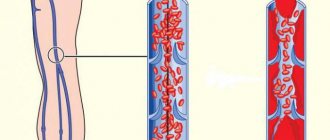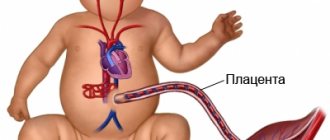What is plasmapheresis?
This is a modern method of cleansing the body at the cellular level by filtering the blood using special devices. It is intended to treat many diseases and is the only salvation for some very rare diseases. The term “plasmapheresis” consists of two words – “plasma” and “apheresis”, which can be literally translated from Latin as “plasma removal”.
The procedure is carried out in public medical institutions, private clinics and even sometimes at home. Blood plasmapheresis earned recognition at the end of the last century, but has already managed to save the health of hundreds of thousands of people.
History of the origin of the method
This method dates back to the times when bloodletting was used as a treatment for any disease. For a long time, this “barbaric” method of therapy was forgotten by doctors, but by the middle of the 20th century, specialists began to make attempts to create a device for dividing blood into phases and removing its liquid part to obtain a therapeutic effect.
Already in the 70-80s, plasmapheresis began to be actively used in the USA and gained popularity in the USSR. But the evidence of the effectiveness of the method has not yet been high enough, because clinical studies require many years of work. However, scientists did not back down and continued to study plasmapheresis. What did this bring to humanity? The persistence of scientists has given medicine a perfect and effective method of blood purification. At the moment, removal of “contaminated” plasma is considered a very effective method for many pathological conditions that are accompanied by various intoxications of the body.
What types and methods of plasmapheresis exist?
There are three main classifications of plasmapheresis.
1. As intended
If blood purification is therapeutic in nature and is used to eliminate any disease or pathological condition, this is therapeutic plasmapheresis. In this case, the filtered formed elements are returned back to the patient’s body, and the plasma is replaced with donor blood or a special solution.
If blood separation is carried out with the aim of obtaining plasma from a healthy person for its further use, then this procedure is called donor plasmapheresis.
2. By method of implementation
There is discrete and automatic plasmapheresis. In the first case, a sufficiently large volume of blood is taken from the patient, placed in a sterile container with preservatives, and the plasma is separated by centrifugation or sedimentation. Then the patient is injected intravenously with the remaining cell mass after removal of the plasma, diluted with saline solution. This method is also called manual.
With automatic plasmapheresis, blood is collected, filtered and returned to the vessel in small portions using a separation apparatus. In this case, all processes occur continuously. This method is more comfortable for the patient, much more mobile, and also prevents cell damage, unlike the manual method.
3. According to the method of plasma removal and processing
Depending on the technique used to remove the liquid part, plasmapheresis is divided into:
- Centrifugal.
- Membrane.
- Cascade.
- Sedimentation (non-hardware plasmapheresis).
- Cryoplasmapheresis.
Each method has its pros and cons. Membrane plasmapheresis is considered the most popular. The sedimentation method is practically no longer used, but it is much cheaper than the others.
When the procedure cannot be performed
Like any other physiotherapy procedure, discrete plasmapheresis has its contraindications. Among them:
- blood clotting disorder;
- sepsis;
- infectious and purulent pathologies;
- individual intolerance to solutions that are planned to be used to restore the original volume of collected blood;
- bleeding;
- tumor neoplasms;
- stomach and duodenal ulcers;
- days of menstrual bleeding in women.
The technique is used with caution in cases of hypotension, rapid heartbeat, hypoproteinemia (below 55 g/l), hypohemoglobinemia (less than 90 g/l). First, you need to eliminate these violations, and only then proceed to the collection and purification of biological material.
Description of methods
The centrifuge method is based on the laws of gravity. The device ensures blood rotation at high speed, due to which it is divided into fractions. In this case, the formed elements are returned to the body, and the plasma is removed. This method is considered outdated; it has many contraindications; in addition, cell injury often occurs during centrifugation.
The membrane method involves the use of a device equipped with special filters with pores that allow plasma to pass through and formed elements to be retained. This technique has its advantages:
- Sterility of plasma filters.
- Protection against infection.
- The speed of the method.
- There are few contraindications.
- Cells are not damaged.
- Possibility of using the procedure for the treatment of cancer patients.
The cascade method differs in that the blood undergoes double processing. First, the cell mass is separated, and then the plasma is filtered, clearing large molecules, proteins and lipids. This technique is popular in the treatment of atherosclerosis.
Hardware-free plasmapheresis (or sedimentation) is carried out without the use of any special devices. Blood is divided into two phases under the influence of gravity. This is a very simple and inexpensive plasmapheresis. Its price differs significantly from the cost of other methods. But it does not allow processing large volumes of blood.
Cryoplasmapheresis involves removing plasma by freezing it at a temperature of -30 °C, and then heating it to +4 °C, followed by centrifugation. Part of the liquid that has precipitated is removed, and the remaining plasma is returned back to the patient.
How is blood plasmapheresis done (varieties of techniques)
Gravity methods are based on the fragmentation of blood substance into formed elements and plasma, under the influence of accelerated sedimentation.
This method provides two options for plasmapheresis:
- non-hardware - carried out through the natural deposition of cellular structures;
- centrifugal, when blood separation is achieved by centrifuging a certain volume of it.
Modern clinics perform two types of hardware gravitational plasmapheresis:
- Discrete. Blood is taken from the patient into a special plastic container with a volume of 400-450 ml, followed by centrifugation of the resulting material, after which functional blood cells are diluted in a sterile solution for infusion and returned to the patient.
- Continuously - in-line. This technique involves the use of a special device for plasmapheresis (separator), thanks to which blood is simultaneously taken, separated and returned to the patient of non-removable components.
The most innovative method of plasmapheresis is membrane, carried out through a special membrane having pores with a diameter of 0.2-0.6 microns. This size of the passage hole allows you to retain blood cells and allow plasma to pass through without any problems. This technique is adapted for the removal of pathological gamma globulins and has proven itself well in the treatment of allergies. One of its varieties is cascade purification, which involves passing blood substance through two membrane filters.
Physiological effect of the procedure
The plasmapheresis procedure allows you to cleanse the body of residual metabolic products (urea, creatinine, uric acid), antibodies, antigens, hormones, high-molecular lipids, inflammatory mediators and other harmful substances. Removal of plasma causes artificial hypovolemia, which provokes the activation of all compensatory and protective forces of the body. In addition, fluid from the tissues rushes into the vessels to restore the volume of circulating blood. This leads to a decrease in swelling and reduces the toxic effects of harmful substances for several hours.
However, after a day the amount of toxins in the blood is restored again. Therefore, experts recommend a course of plasmapheresis, designed for 3-4 visits. With each subsequent procedure, a new level is cleansed: first the vessels, then the tissues, then the cells. The rheological properties of blood change in a positive direction, excessive viscosity is eliminated, blood supply and oxygen supply to organs and tissues is increased. This improves the general condition of the body, increases adaptive abilities, and also relieves symptoms of intoxication with harmful compounds.
However, you should not rely solely on blood plasmapheresis, since it is always important to carry out complex treatment of any disease, following the doctor’s instructions.
Who is this procedure indicated for?
Now many doctors prescribe plasmapheresis. Most patients have no idea what kind of procedure this is. Meanwhile, it is certainly necessary to know under what conditions it is worth agreeing to this method of treatment. Plasmapheresis is a cleansing of the body, which is recommended for the treatment of diseases of almost all human organs and systems. However, there are a number of pathologies for which plasma exchange therapy is an absolute indication. This means that refusal of procedures can lead to the death of the patient. Such diseases include:
- sickle cell anemia;
- thrombocytosis and leukocytosis;
- erythroleukemia;
- porphyrin disease;
- hypercholesterolemia (hereditary);
- Rufus' disease;
- DIC syndrome;
- hyperviscose syndrome;
- myasthenia gravis;
- Guillain-Barre syndrome;
- delayed thrombocytopenia;
- myoglobinemia;
- intravascular hemolysis;
- Goodpasture's syndrome;
- Gasser syndrome;
- thrombocytopenic acroangiothrombosis;
- cryoglobulinemia;
- chronic polyneuropathy;
- poisoning by poisons.
Relative indications for plasmapheresis are:
- Gastrointestinal pathologies: ulcerative colitis, Crohn's disease.
- Cardiovascular diseases: condition after a heart attack, myocarditis, rheumatism, etc.
- Allergies: atopic dermatitis, hay fever, etc.
- Dermatological diseases: psoriasis, pemphigus, herpes, etc.
- Kidney pathologies: glomerulonephritis, urinary tract infection, etc.
- Diseases of the respiratory system: bronchial asthma, hemosiderosis.
- Liver problems: autoimmune hepatitis, etc.
- Purulent-septic complications after operations.
- Systemic vasculitis.
- Toxic lesions in cancer.
- Atherosclerosis.
Recently, gynecologists have advised performing plasmapheresis during pregnancy if a woman suffers from toxicosis, has Rh conflict or fetoplacental insufficiency. This list can be continued for a very long time. After all, there are about 200 diseases for which plasmapheresis can be successfully used. There are also contraindications to this method.
Indications
Plasmapheresis is used to remove substances that provoke a pathological process from the body.
Treatment is prescribed for:
- The need to urgently rid the plasma of toxins and metabolic elements caused by autoimmune diseases or inflammatory processes. For example, with rheumatoid arthritis, asthma, sclerosis, hypertension, neuropathy.
- The need to maintain a certain blood composition for a long time. In this case, only one link in the pathogenesis is excluded. Typically, indications for use are Rh-conflict, diabetes, viral hepatitis, in the process of treating oncological pathologies, poisoning with poisons, toxins of bacterial origin.
- Preparation for surgery if the primary composition is unacceptable for surgical intervention.
In general, mechanical blood purification can be used in complex therapy for:
- Multiple myeloma.
- Extensive destruction of red cells in blood vessels.
- The presence of free myoglobin in the blood.
- Hemoglobinopathies.
- Myasthenia.
- Gasser's disease, Crohn's.
- Porphyria.
- Intoxication with chemical poisons.
- Rheumatism.
- Viral myocarditis.
- Asthma, chronic pneumonia.
- Ulcerative colitis.
- Endocrine pathologies, in particular diabetes.
- Peritonitis, sepsis.
- Significant burns.
- Organ rejection after transplantation.
- Herpes, psoriasis.
- Glomerulonephritis.
- Allergic encephalitis.
- Vasculitis.
Who will have to refuse such a procedure?
There are not many contraindications for this procedure. But it is strictly forbidden to carry out it in the presence of irreversible damage to organs, in case of unstoppable bleeding, coagulation disorders and stomach ulcers.
Blood cleansing is not recommended in case of disturbances in the rhythm and frequency of the heartbeat, pressure surges, reduced blood viscosity, menstruation, acute infectious diseases, hypoproteinemia, anemia in elderly patients, various types of shock, serious liver diseases, “bad” veins.
Previously, it was believed that plasmapheresis during pregnancy was dangerous to the health of the child, but modern research proves the opposite. Naturally, provided that the procedure is carried out strictly according to the indications and according to the instructions.
Thus, some conditions preclude the use of plasmapheresis as a treatment modality. Contraindications should be assessed by the attending physician, especially if there is a risk of deterioration in the patient's health if the procedure is refused.
Complications
With a professional, responsible approach to his work by the specialist performing plasmapheresis, with a complete examination of the patient, and with the use of modern high-quality equipment, the procedures are well tolerated by patients, and unpleasant situations occur extremely rarely. However, since each organism is individual, it is impossible to completely predict its reaction to plasmapheresis - in some cases complications still develop. The main ones are:
- allergic reactions up to anaphylactic shock (as a rule, they develop in response to the introduction of donor plasma or drugs that prevent the formation of blood clots into the bloodstream);
- hypotension (a sharp decrease in blood pressure; occurs in cases when a large volume of blood is simultaneously removed from the patient’s bloodstream);
- bleeding (develops as a result of exceeding the dose of drugs that reduce the ability of blood to clot);
- the formation of blood clots (they are a consequence of an insufficient dose of the above drugs; blood clots spread with the blood flow and, entering vessels of a smaller diameter, clog them; these conditions are extremely dangerous for the patient’s life);
- blood infection (occurs when the rules of asepsis are violated during plasmapheresis, more often with non-hardware methods of this procedure, but with hardware - extremely rarely);
- renal failure (can develop if donor plasma is used as a blood substitute; it is a consequence of the latter’s incompatibility with the blood of a person receiving plasmapheresis).
How is therapy carried out?
Plasmapheresis does not require any special preparation. Usually the procedure is carried out in special manipulation rooms or directly in the patient’s room. To do this, the patient lies down on a special couch and takes a comfortable position. Depending on the method, a special catheter (flexulum) is inserted into one or two hands. Most often, the veins on the elbows are used for this. If the patient is in serious condition, the catheter is placed in the subclavian vein. To prevent blood from clotting and blood clots from forming, heparin is additionally injected into the flexulum.
The procedure lasts about 1-2 hours. This depends on the method and volume of blood being purified. During all manipulations, the patient is constantly under the supervision of a doctor. They measure his pulse, blood pressure, check his breathing and oxygen supply to his tissues.
Plasmapheresis devices can be portable or stationary. The former are much more convenient, since they can be transported to any place in the hospital or even to the patient’s home. The device takes blood in portions, about 40 ml at a time, purifies it, returns it back through the catheter and takes blood again. Some devices use automatic administration of anticoagulants. In one minute, a plasmapheresis machine is able to process about 100 ml of blood, i.e., approximately 800 ml of excess fluid can be removed in an hour.
Experts recommend removing no more than a quarter of the circulating plasma in one session. Doctors calculate this indicator depending on the individual characteristics of a person: weight and circulating blood volume (CBV).
It is known that plasma makes up 55% of the bcc. And to determine the last indicator, you need to multiply your body weight by 75. For example, a person weighing 80 kg needs to remove the following amount of plasma in one session:
80 x 75 x 0.55x0.25 = 825 ml.
It is very important to maintain all proportions when performing plasmapheresis. The benefits and harms of a treatment technique depend on many factors, including the accuracy of calculations.
Preparation for the procedure
To reduce the risk of complications from manipulation, special preparation is recommended before performing it.
To do this you need:
- Normalize proper nutrition, stick to a high protein diet, but reduce the intake of phosphorus, potassium, and sodium.
- Get enough sleep and drink plenty of fluids the night before plasmapheresis.
- Stop smoking.
- Get a medical examination.
The therapist examines the patient, measures blood pressure, prescribes a clinical and biochemical blood test, determination of glucose, Wasserman reaction, RW, coagulogram, ECG.
Can plasmapheresis cause harm?
Recently, this expensive procedure has been positioned as a panacea for all diseases. Private clinics are especially active in promoting plasmapheresis. The benefits and harms of this method directly depend on the professionalism of doctors. But just like any other treatment method, it has its side effects and disadvantages:
- Anaphylactic shock.
- Allergies to donor plasma and replacement fluids.
- Autoimmune kidney damage as a reaction to donor plasma.
- Infection from donor plasma.
- Development of sepsis due to non-compliance with asepsis rules.
- Bleeding (if there are problems with clotting).
- Thrombosis (with insufficient use of anticoagulants).
- Fall in blood pressure.
- Removing not only toxins, but also useful substances along with plasma.
- Short-term decrease in immunity.
- Violation of metabolism and the amount of drugs taken in the blood.
- Nausea.
- Headache.
This is a very serious and complex procedure, so you need to be careful in choosing where to perform the treatment. Many private clinics offer plasmapheresis to patients. What kind of institutions are these, what specialists work there, are there permissions to carry out this procedure? You need to know all this before agreeing to therapy, so as not to fall into the hands of uneducated scammers. After all, this can lead to a disastrous outcome.
Contraindications
In some cases, even a useful procedure can lead to a deterioration in the patient’s well-being, so it is not recommended for:
- Anemia when hemoglobin is less than 80 g/l. If you resort to manipulation in this case, oxygen starvation will increase.
- Bleeding of any nature.
- Conditions when the body does not have enough blood. Typically, this list includes pathologies of the cardiovascular system, as well as ulcers and the post-infarction interval.
- Reduced amount of protein in the blood (less than 60 g/l). This indicator is responsible for the permeability of the walls of blood vessels and the level of the liquid component of blood inside them. If the value deviates from the norm, the procedure disrupts the water-electrolyte balance and increases blood pressure.
- Death of cerebral vessels due to circulatory disorders.
- High blood pressure.
- Liver dysfunction.
- Heart diseases.
All contraindications can be:
- Absolute when there is significant damage to the brain, heart, liver, lungs, kidneys or severe bleeding.
- Relative. These include blood diseases, when the risk of extensive bleeding is increased, and conditions that provoke bleeding. For example, ulcers, hypotension, pregnancy, menstruation, infectious diseases.
It is also better to refuse manipulation if you are allergic or if negative reactions to blood transfusions have previously been observed.
What results should you expect?
The effectiveness of plasmapheresis has been proven in the case of many diseases. The positive effect of the procedure is regularly recorded, even with relative indications. However, it is worth understanding that monotherapy may not always help. Therefore, it is so important to undergo comprehensive treatment from qualified specialists, without counting on healing from one course of plasma removal.
To achieve good results, you need to be confident in the quality of the care provided and undergo a preliminary examination to confirm the absence of contraindications to the use of such a treatment technique as plasmapheresis.
The price of this procedure is quite high (4500-5500 thousand rubles), and the patient will need not one or two, but 3-4 sessions, otherwise there will be no point in treatment. This should be taken into account. However, many clinics offer discounts if the course duration exceeds 5 sessions. It should be noted that this procedure cannot be cheap, since equipment and materials are now quite expensive. Therefore, you should not trust clinics where the procedure is performed at a very low price.
Let's sum it up
Yes, such therapy takes a toll on the patient’s pocket, but it’s worth it. Improving the general condition, enabling all protective and compensatory functions, normalizing rheological blood parameters, relieving symptoms of intoxication - this is not the entire list of the positive effects of the procedure we are considering on the body.
Plasmapheresis is an innovative technique that helps many patients cope with their ailments and cleanse the blood of “contaminated” plasma. This procedure is indicated for a huge number of diseases and has very few contraindications. Plasmapheresis with the help of qualified specialists and in compliance with all instructions gives positive results in the treatment of even the rarest diseases.











